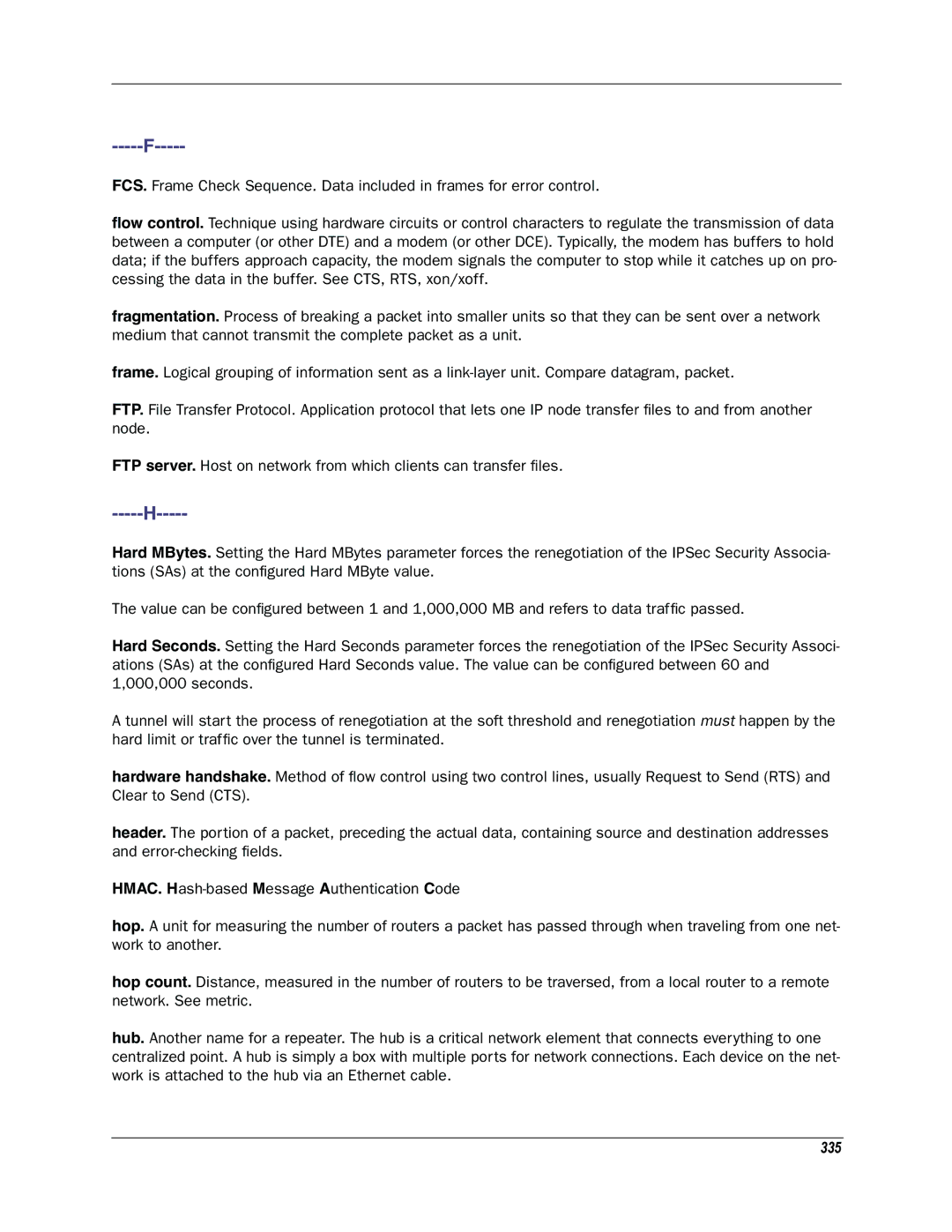
FCS. Frame Check Sequence. Data included in frames for error control.
flow control. Technique using hardware circuits or control characters to regulate the transmission of data between a computer (or other DTE) and a modem (or other DCE). Typically, the modem has buffers to hold data; if the buffers approach capacity, the modem signals the computer to stop while it catches up on pro- cessing the data in the buffer. See CTS, RTS, xon/xoff.
fragmentation. Process of breaking a packet into smaller units so that they can be sent over a network medium that cannot transmit the complete packet as a unit.
frame. Logical grouping of information sent as a
FTP. File Transfer Protocol. Application protocol that lets one IP node transfer files to and from another node.
FTP server. Host on network from which clients can transfer files.
Hard MBytes. Setting the Hard MBytes parameter forces the renegotiation of the IPSec Security Associa- tions (SAs) at the configured Hard MByte value.
The value can be configured between 1 and 1,000,000 MB and refers to data traffic passed.
Hard Seconds. Setting the Hard Seconds parameter forces the renegotiation of the IPSec Security Associ- ations (SAs) at the configured Hard Seconds value. The value can be configured between 60 and 1,000,000 seconds.
A tunnel will start the process of renegotiation at the soft threshold and renegotiation must happen by the hard limit or traffic over the tunnel is terminated.
hardware handshake. Method of flow control using two control lines, usually Request to Send (RTS) and Clear to Send (CTS).
header. The portion of a packet, preceding the actual data, containing source and destination addresses and
HMAC.
hop. A unit for measuring the number of routers a packet has passed through when traveling from one net- work to another.
hop count. Distance, measured in the number of routers to be traversed, from a local router to a remote network. See metric.
hub. Another name for a repeater. The hub is a critical network element that connects everything to one centralized point. A hub is simply a box with multiple ports for network connections. Each device on the net- work is attached to the hub via an Ethernet cable.
